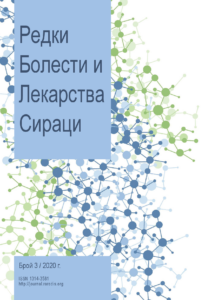 Introduction: Hereditary retinal dystrophies are a heterogeneous group of diseases with a relatively low frequency in the human population, characterized by involvement of different retinal layers, most often the complex retinal pigment epithelium – photoreceptors and causing severe visual impairment – loss of night vision, visual field, color vision and visual acuity in the initial stages and leading to progressive and severe loss of visual function by altering the retinal anatomy and function.
Introduction: Hereditary retinal dystrophies are a heterogeneous group of diseases with a relatively low frequency in the human population, characterized by involvement of different retinal layers, most often the complex retinal pigment epithelium – photoreceptors and causing severe visual impairment – loss of night vision, visual field, color vision and visual acuity in the initial stages and leading to progressive and severe loss of visual function by altering the retinal anatomy and function.
Objective: To present the modern diagnostic methods that provide accurate diagnosis of hereditary retinal dystrophies, which is essential for a proper therapeutic approach.
Methods and results: The development of medical science and technology has led to the introduction of new, increasingly sophisticated methods for early diagnosis of these diseases – the electrophysiological studies have become more complex and informative. Together with computer automated perimetry, optical coherence tomography (OCT), angioOCT, fluorescein angiography, fundus autofluorescence and adaptive optics, they allow very accurate topographical localization of the defect. And together with the advances in genetics, optogenetics, molecular biology, retinal biochemistry and regenerative medicine, they provide a better understanding of the mechanism of these diseases and increase the therapeutic opportunities.
Conclusion: The knowledge of modern methods of diagnosis of hereditary retinal dystrophies ensures accurate diagnosis of the different nosological groups, which is a prerequisite for a proper therapy. Read the whole article here.
